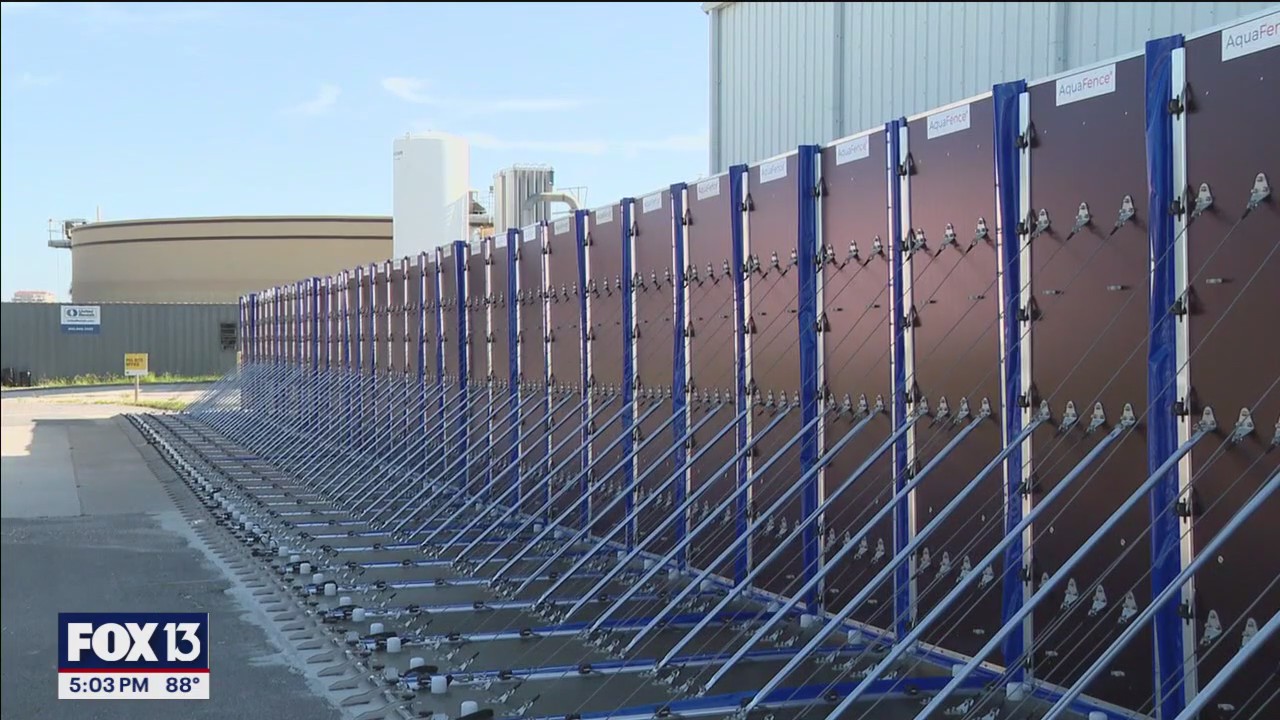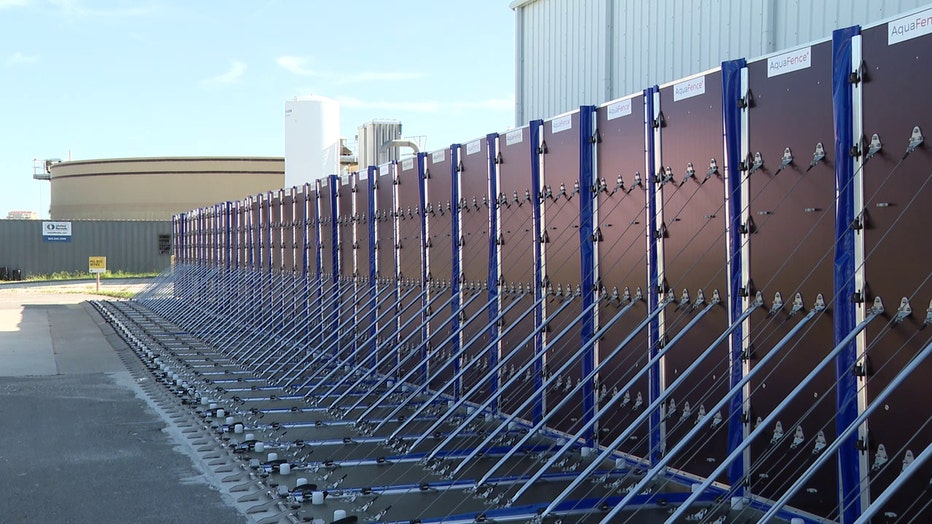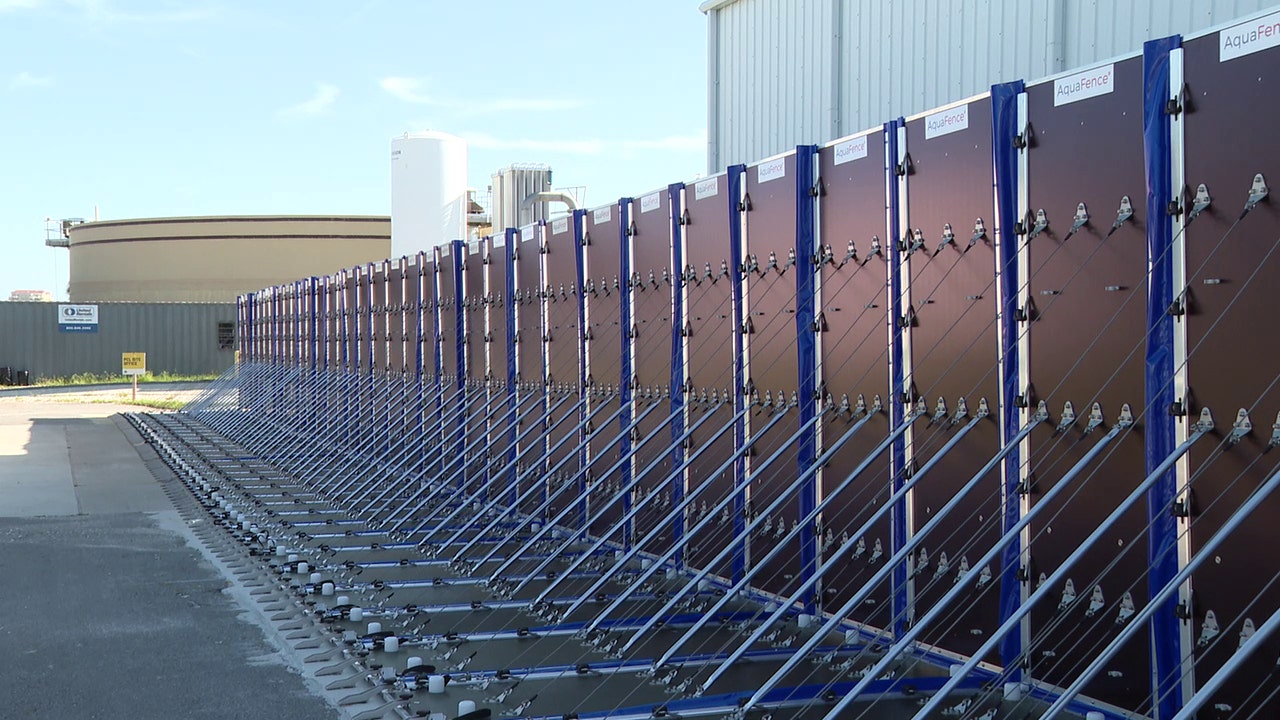
ST. PETERSBURG, Fla. – St. Petersburg just added another tool to protect infrastructure against hurricanes, and it’s a familiar one for the Tampa Bay Area.
Big picture view:
Crews recently installed an AquaFence around the city’s main lift station, Lift Station 85, near Albert Whitted Airport. Nearly a quarter of the city’s wastewater flows into the pump station and six pumps screen it for solids, and pump it to the Southwest Water Reclamation Facility.
READ: Meet the CERT volunteers who jump into action after Florida storms
An AquaFence has protected Tampa General Hospital from floodwaters for a few years.
Why you should care:
“The majority of the hospitals are served by this facility, as is our emergency operations center, many of the storm shelters that people would go to during a storm,” Claude Tankersley, the public works administrator for the City of St. Pete, said. “So, this is a very critical facility.”
If floodwaters got into the station, it would be detrimental.
MORE: Report: Cost keeps many from preparing for hurricane season, insurance experts focus on key steps
“We would be out of wastewater service for an extended period of time,” Kira Barrera, the special projects coordinator for the city’s Water Resources Department, said.
That’s why city leaders decided to put up an AquaFence. It gives the facility up to 15 feet of storm surge protection.
“The ground we’re standing on is anywhere from six to six and a half feet above sea level. This AquaFence is nine feet tall,” Tankersley said. “It’s the tallest that they make. So, if you add that, six plus nine, you get approximately 15 feet of storm surge protection for this station.”

What they’re saying:
“This was one of our key primary projects that we knew could bring a lot of benefit and so, seeing it finally … it gave us a lot of relief,” Tankersley said.
READ: Bay Area firefighters warn of electric vehicle fires ahead of height of hurricane season
Last year’s hurricanes came close to flooding the lift station – too close, Barrera said. Hurricane Helene’s waters reached the station’s stairs, and staff had to leave for safety reasons. Milton’s 15-foot storm surge threat forced officials to shut down the Southwest and Northeast plants, and the lift station, forcing residents to avoid flushing toilets and showering.
“This now allows them to maintain operations for as long as possible and keep staff safe,” Barrera said. “It’s pretty critical that we provide these measures, reinforcements.”
They’ll leave three-fourths of the AquaFence set up during hurricane season, and put the other panels up a couple of days before a storm, which will take about half of a day.
Dig deeper:
Barrera said they are also elevating critical components inside the facility, and using waterproof coatings and flood barriers on the doors. Raising the entire lift station, though, would cost millions and take five to six years, compared to six months and $700,000 for the AquaFence.
“We can look at this as insurance,” Tankersley said. “It’s a good investment.”
MORE: Hillsborough leaders approve $709 million hurricane recovery plan
“The AquaFence is the best solution for it until such time we need to replace this facility. We don’t anticipate replacing this facility in the next 20 years because it still has a lot of life left in it. When it does come time for us to replace the facility, then we will elevate it,” he said.
What’s next:
It’s all part of the St. Pete Agile Resilience Plan that was started after last year’s storms. They’re speeding up projects that were already in the works to continue to strengthen the city’s infrastructure.
The city has invested nearly one billion in resiliency projects over the last nine years.
The Source: FOX 13’s Kailey Tracy spoke with St. Pete’s Public Works Administrator and the city’s Water Resources Department for this story.

